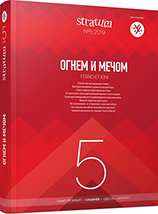Элитный конский убор у населения лесостепного варианта салтово-маяцкой культуры: разнообразие в единстве
Elite Horse Attire of the Forest Steppe Variant of the Saltov-Mayaki Population: Diversity in Unity
Author(s): Victor S. AksenovSubject(s): History, Archaeology, Middle Ages, 6th to 12th Centuries
Published by: Издательский дом Stratum, Университет «Высшая антропологическая школа»
Keywords: Saltov-Mayaki culture; North-Western Khazaria; horse attire; Alans; Turks; headstall;
Summary/Abstract: At present, within the boundaries of the forest-steppe variant of the Saltov-Mayaki cultural area, such funerary sites have been discovered, where three burial rites are represented: inhumations in earthen catacombs, inhumations in earth pits, and cremation of the dead. This indicates presence of several ethnic groups. As suggested by the materials from the warrior-riders’ burials of different ethnic groups, at the stage of the formation of the Saltov-Mayaki culture (the second half of the 8th — the beginning of the 9th centuries), two elite horse attires were present here, that can be called “Alan” and “Turkic”. They differed by their form, composition and methods by which ornamental elements of horse belts were fastened, as well as by the material from which they were made. At the beginning of the 9th century, the elite harness set is unified, metal ornaments of horse belts are decorated with floral ornaments. The so-called “Saltov” horse attires start spreading, putting together all the elements of jewelry that formerly were specific features of the “Alan” and “Turkic” attire.
Journal: Stratum plus. Археология и культурная антропология
- Issue Year: 2019
- Issue No: 5
- Page Range: 193-208
- Page Count: 16
- Language: Russian

